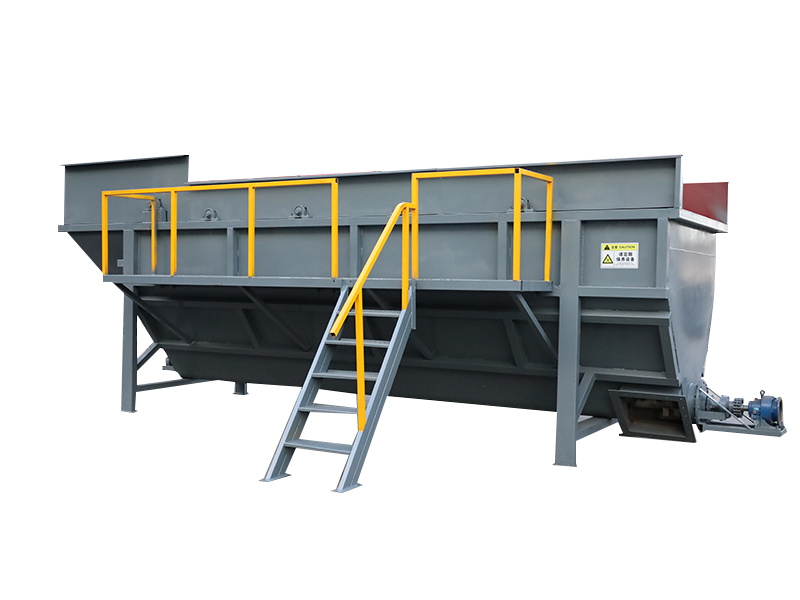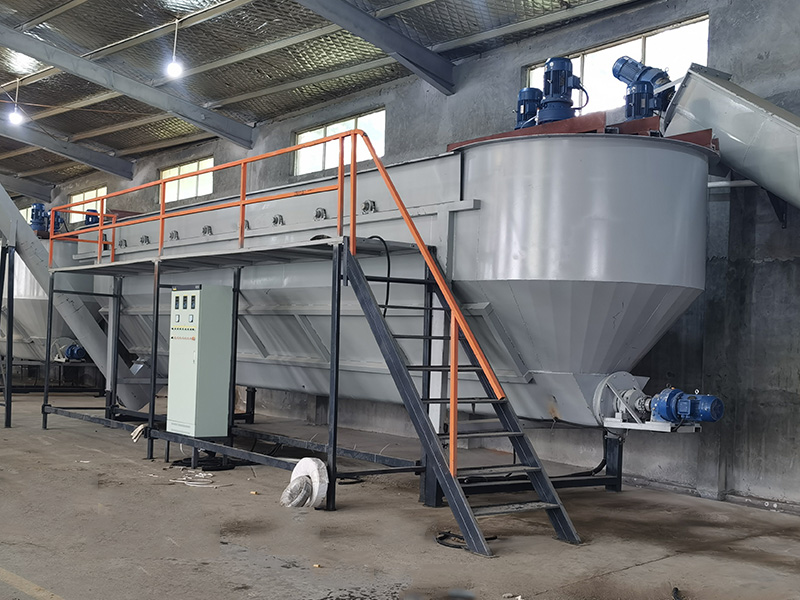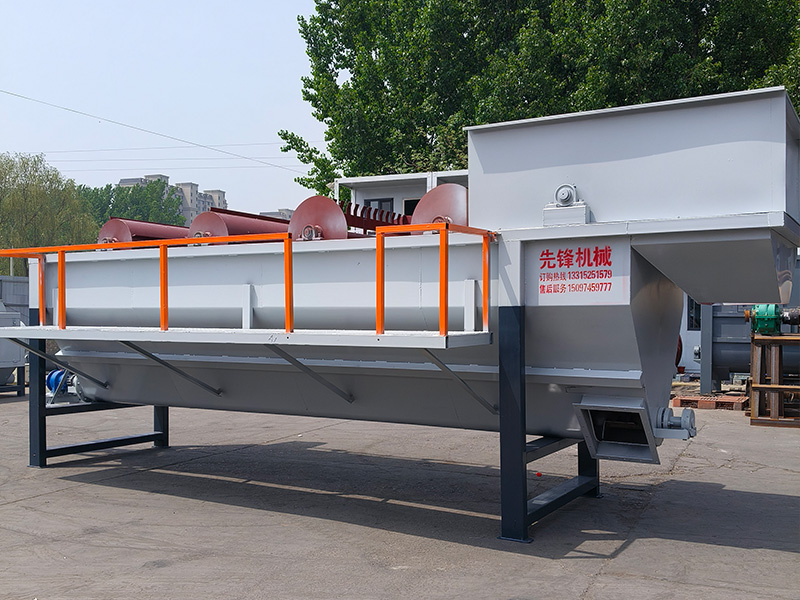Understanding the Benefits of Rinsing Hot Washing Tanks in Manufacturing
Jul 18,2025

Understanding the Benefits of Rinsing Hot Washing Tanks in Manufacturing
In the world of manufacturing, the efficiency and effectiveness of cleaning processes can have a profound impact on production quality and operational costs. Among the various cleaning methods employed, rinsing hot washing tanks stands out as a vital procedure that not only enhances cleanliness but also promotes the longevity of equipment. This article delves deeply into the significance of rinsing hot washing tanks, examining the numerous benefits it offers to the manufacturing sector.
The Importance of Hot Washing Tanks in Manufacturing
Hot washing tanks are instrumental in the manufacturing process, particularly in industries involving the production of machinery and components subject to dirt, grease, and other contaminants. These tanks utilize heated water and cleaning solutions to effectively dissolve and remove stubborn residues from surfaces. The result is not just cleanliness; it ensures that the equipment operates optimally, minimizing the risk of defects in the final products.
What Are Hot Washing Tanks?
Hot washing tanks are specialized cleaning systems designed to tackle heavy-duty cleaning tasks. These tanks are often filled with hot water mixed with detergents or solvents, capable of breaking down and removing tough contaminants. The heat enhances the effectiveness of the cleaning agents, allowing manufacturers to achieve a higher standard of cleanliness than with cold washing methods.
Critical Aspects of Rinsing
Rinsing is a crucial step following the hot washing process. It involves flushing the tank contents with water to remove any remaining cleaning agents, contaminants, and residues. Failure to rinse effectively can lead to several issues, including:
- Compromised Product Quality: Residual cleaning agents can contaminate products, leading to defects and potential safety hazards.
- Equipment Wear and Tear: Chemical residues can corrode machinery over time, reducing its lifespan.
- Compliance Issues: Many industries must adhere to strict cleanliness standards; inadequate rinsing can lead to non-compliance.
Benefits of Rinsing Hot Washing Tanks
Understanding the benefits of rinsing hot washing tanks is essential for manufacturing professionals seeking to enhance their operations. Here are some of the key advantages:
Enhanced Cleaning Efficiency
Rinsing ensures that all residues from the hot washing process are thoroughly removed. This step is vital in achieving the highest level of cleanliness, as it prevents any buildup of contaminants in the tank. By enhancing cleaning efficiency, rinsing contributes to a more effective production process.
Improved Product Quality and Safety
When hot washing tanks are rinsed properly, the risk of cross-contamination between cleaning agents and products is significantly reduced. This is particularly important in industries such as food processing, pharmaceuticals, and electronics, where product purity is paramount. By ensuring that no harmful residues remain, rinsing helps maintain high product quality and safety standards.
Prolonged Equipment Lifespan
Regular rinsing of hot washing tanks can significantly extend their lifespan. Residues from cleaning agents can lead to corrosion and wear on the tank's interior surfaces, ultimately requiring costly repairs or replacements. By incorporating rinsing into the cleaning protocol, manufacturers can protect their investments and reduce long-term maintenance costs.
Compliance With Industry Standards
Manufacturers are often subject to rigorous regulations concerning cleanliness and safety. Rinsing hot washing tanks helps ensure compliance with these standards, reducing the risk of penalties and enhancing the company's reputation. Adhering to best practices in cleaning and rinsing demonstrates a commitment to quality and safety, fostering trust with customers and regulatory bodies alike.
Best Practices for Rinsing Hot Washing Tanks
To maximize the benefits of rinsing hot washing tanks, manufacturers should adhere to several best practices:
1. Use Quality Rinse Water
Utilizing high-quality rinse water is essential for effective rinsing. Water that is free from contaminants will ensure that no impurities are introduced during the rinsing process. Depending on the industry, treated or filtered water may be necessary to achieve the desired cleanliness level.
2. Implement a Rinsing Schedule
Establishing a regular rinsing schedule helps ensure that this critical step is not overlooked. Depending on production volume and the nature of contaminants, manufacturers should determine the frequency of rinsing—whether after each cycle or at set intervals throughout the day.
3. Monitor Water Temperature
The temperature of rinse water can impact its effectiveness. Using water that is warm—but not overly hot—can help dissolve residue more effectively. Rinsing with excessively hot water may also damage certain materials, so it is essential to find the right balance.
4. Conduct Regular Inspections
Regular inspections of hot washing tanks and rinsing processes can identify potential issues before they escalate. By monitoring the rinsing process, manufacturers can ensure that all residues are effectively removed and that the tanks remain in good condition.
5. Train Staff on Rinsing Protocols
Proper training for staff on the importance of rinsing and the correct procedures can significantly enhance the effectiveness of the operation. Employees should be aware of the roles they play in maintaining cleanliness and the impact of their actions on product quality and safety.
Common Challenges in Rinsing Hot Washing Tanks
While rinsing offers significant benefits, several challenges can arise during the process:
1. Inadequate Rinsing Techniques
Insufficient rinsing techniques can lead to residual contamination. It is vital to ensure that all parts of the tank are flushed adequately, including corners and crevices.
2. Water Quality Issues
Using contaminated rinse water can negate the cleaning benefits achieved during hot washing. Continuous monitoring and treatment of rinse water quality are necessary to avoid this issue.
3. Equipment Limitations
Some tanks may lack proper rinsing mechanisms, making it challenging to achieve thorough rinsing. Upgrading to more advanced equipment or adding dedicated rinsing solutions may be necessary for optimal results.
Conclusion
Rinsing hot washing tanks is an indispensable practice in the manufacturing sector that significantly impacts product quality, operational efficiency, and equipment longevity. By implementing proper rinsing protocols, manufacturers can mitigate risks, enhance cleanliness, and maintain compliance with industry standards. The investment in effective rinsing not only pays off in terms of reduced maintenance costs but also in the production of high-quality, safe products. Understanding and addressing the nuances of hot washing tank rinsing will ultimately lead to a more productive and successful manufacturing process.
FAQs about Rinsing Hot Washing Tanks in Manufacturing
1. What is a hot washing tank?
A hot washing tank is a specialized cleaning system that uses heated water and detergents to remove contaminants from manufacturing equipment and components.
2. Why is rinsing necessary after hot washing?
Rinsing is essential to remove any leftover cleaning agents or residues that may contaminate products, ensuring compliance with safety standards and maintaining product quality.
3. How often should hot washing tanks be rinsed?
The rinsing frequency depends on the production volume and the nature of contaminants. Regular schedules should be established to ensure effective cleaning.
4. What are the best practices for rinsing hot washing tanks?
Best practices include using quality rinse water, implementing a rinsing schedule, monitoring water temperature, conducting regular inspections, and training staff on proper rinsing protocols.
5. Can inadequate rinsing affect product quality?
Yes, inadequate rinsing can lead to residues remaining on equipment, which can contaminate products and compromise their quality and safety.
Contact Us
E-mail :
Phone/WhatsApp:
Address:
Shunping, Baoding City, Hebei Province









